The Loire Valley is home to over 4000 wineries that produce a dizzying array of elegant, quality wines. There are racy whites, refreshing rosés, reds that favour fruit over force, and sparkling wines that even rival the neighbouring Champagne region. It is here in the “Garden of France” that you can revel in beautiful summer days, stunning chateaux, and several of France’s most underrated wines.
Sancerre & the Upper Loire Wine Guide: France's Most Diverse and Third Largest Wine Region
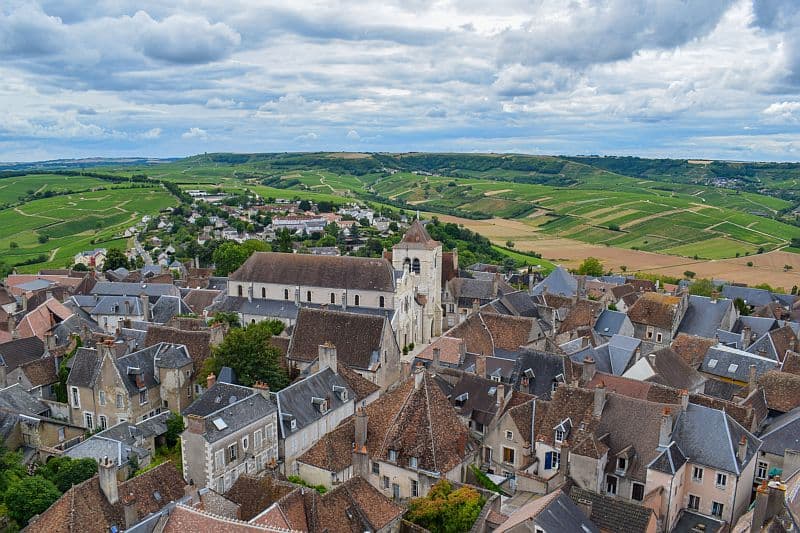
Over a distance of 60 miles, there is a great variety of geology and climates, and the white wines of the Loire may be dry, semi-sweet, or sweet. The grapes most associated with the Loire wine region are Sauvignon Blanc and Chenin Blanc. At best they have the fresh, light appeal of gooseberries, blackcurrants, and crunchy raw vegetables. The reds, made from the Cabernet grape, have the fruitiness and grape-like taste of Beaujolais but are a little drier. Aside from the Champagne region, the best sparkling wines come from the Loire wine region.
Like the majority of vineyards of France, the Romans were the first to make wine in the Loire. When they conquered Gaul in the 1st century AD, they recognised that the climate and soil were perfect for vines and that the river made a convenient thoroughfare to move goods throughout the Empire.
By the Middle Ages, the Loire was at the heart of France. At the midpoint between the Latin south and the Germanic north, it was where both culture and language met. Monks of the Catholic Church tended the vineyards and the wines gained popularity, especially with the English and the Dutch. The French aristocracy made the Loire a summer retreat in the 15th – 17th centuries, building lavish chateaux and further popularising the local wines.

The French Revolution caused big changes in 1789. Building the National Railroad brought both cheaper wines from the south and more exotic selections from Burgundy, Bordeaux and the Languedoc leaving the Loire behind. While the Loire wine region was one of the last regions to be affected by Phylloxera, it was also one of the last to recover.
When the Appellation d’Origin Contrôlée (AOC) was introduced in 1935, the Loire Valley was recognised as a region of quality. Today it has 69 AOP’s (official designations), which make up 75% of the wine production.
The Upper (Centre) Loire may be the smallest, but it is home to the most famous Loire appellations – Sancerre wine and Pouilly-Fumé wine. The Sauvignon Blanc from these two areas are emulated throughout the wine world.
In many ways, the Sancerre wine region has more in common with the Burgundy region of Chablis, (only 70 miles to the east), than with the rest of the Loire Valley. The climate is what can be called semi-continental with big differences between the day and night-time. Frost is always a concern during spring, and fog engulfs the valley during the autumn.
White grape varieties include Sauvignon Blanc, Chasselas, Pinot Gris and Sacy. Red grape varieties include Pinot Noir and Gamay.
The Upper Loire is closest to the source of the Loire River in the Massif Central Mountains and the majority of the vineyards are found along the river where they take advantage of its temperature moderating influence.
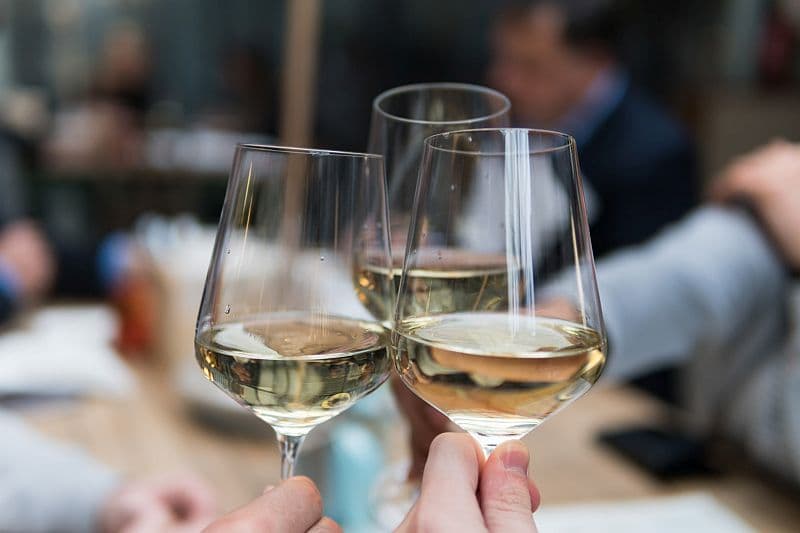
Sancerre Wine
Sancerre is the most recognizable appellation for French Sauvignon Blanc in the Loire Valley. The Sancerre wine region’s rolling limestone hills and semi-continental climate deliver richly textured Sauvignon Blanc wines with ripe gooseberry aromas, bracing acidity, and flinty-smoke flavours.
The soils vary quite a bit with three distinct soil types, all found atop a base of Kimmeridgian Limestone, the same as Chablis, parts of Champagne, and the white cliffs of Dover.
Terre Blanche is a mix of clay, Kimmeridgian limestone and oyster shells, creating wines that are fruity, ageable and angular with high acidity.
Caillotes features small pebbles of Oxfordian limestone and yields wines with delicate perfume and less structure than Terre Blanche. Silex, or flint, lends a smoky, gunflint quality to the grapes.
Sancerre is on the eastern edge of the Loire Valley. Here, grapes are planted in all three soil types and, when blended together, create the benchmark for Sauvignon Blanc – racy, refreshing wines with zippy citrus, lemongrass and gooseberry and a chalky minerality. Often overshadowed, the red wines of Sancerre are elegant expressions of Pinot Noir – fresh and easy drinking with bright, high-acid cherry and plum aromas. The Sancerre wine region was one of the first to be granted an AOP (Appellation d’Origine Protégée), in 1936, and over the years its area has expanded fourfold – most recently in 1998.
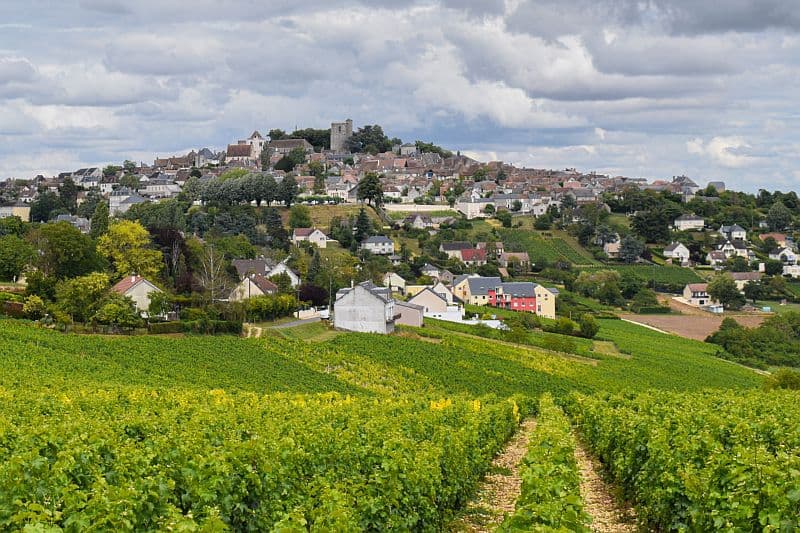
Further south, on the right bank of the river, are the vineyards of Pouilly-Fumé. Sauvingon Blanc is the only sanctioned grape, and the region owes its name to the “smoky” attributes wines have from being grown on silex (flint) soils. These wines are often blended with the fruitier and lighter Sauvignon Blanc, which is grown on Caillote soil (sandy, pebbly soil), as well as deeper and creamier Sauvignon Blanc planted on clay (Terre Blanche).
Pouilly-sur-Loire is strictly for white wines made primarily with the obscure Chasselas grape (often blended with a hint of Sauvignon Blanc.)
Côteaux du Giennois, northeast of the Sancerre wine region, receives the most rainfall in the area. Here, Sauvignon Blanc crafts crisp, minerally white wines, filled with quince and white flowers. Gamay and Pinot Noir blend to produce medium-bodied reds with peppery blackberry and plum and rosés that evoke flavours of tart red fruit and soft peaches.
Southwest of the Sancerre wine region is Menetou-Salon. The white wines are vibrant with a distinctive aroma of dried chamomile flowers, while the rosé and red Pinot Noir wines are medium-bodied with notes of cherry, plum, and candied fruits.
Quincy was the second region in France to be granted status in the 1930s, after Chateauneuf-du-Pape. Vineyards are planted on terraces of Kimmeridgian limestone, with sand and silt, above the River Cher. Expressions of melon, pear, grapefruit, minerals, and minty herbs are indicative of this AOP.

Neighbouring Reuilly is one of the hottest and driest parts of the Loire Valley. Chalk and limestone soils lend a crisp citrus, cut grass, and mineral quality to Sauvingon Blanc, while Pinot Noir creates red and rosé wines with light fresh acidity, red cherry fruit and minerality.
Further south and higher in elevation are several lesser-known AOPs. Sainte-Pourçain encompasses 19 communes on the Allier River, 90 miles south of the Sancerre wine region. Chardonnay and Sacy or Sauvignon Blanc create fruity, grassy and spicy whites, while rosé is crafted from 100% juicy Gamay. Pinot Noir is blended with Gamay resulting in reds that are fresh and light with ripe red fruit notes.
One of the newest regions, Châteaumeillant is located in the foothills of the Massif Central, making it the most central vineyard in France. It is also the coolest and smallest AOP of the Loire. Soils of sandstone, mica shist, and clay silica dominate, as do the red varietals Gamay and Pinot Noir. Wines are brimming with bright berry flavours and a peppery finish, while rosé, with the addition of Pinot Gris, show notes of peach nectarine mingled with red fruits.
Côte Roannaise creates fruity off-dry rosé and sippable reds from 100% Gamay, as does Côtes du Forez AOP which is right next door and has, officially, the most southerly vineyards of the Loire.
Another more recent addition is Côtes d’Auvergne. The volcanic slopes along the Allier River are a mix of clay and limestone, home to Chardonnay that is bright with apple and citrus characteristics. Gamay and Pinot Noir produce medium-bodied wines with lots of red fruit aromas.
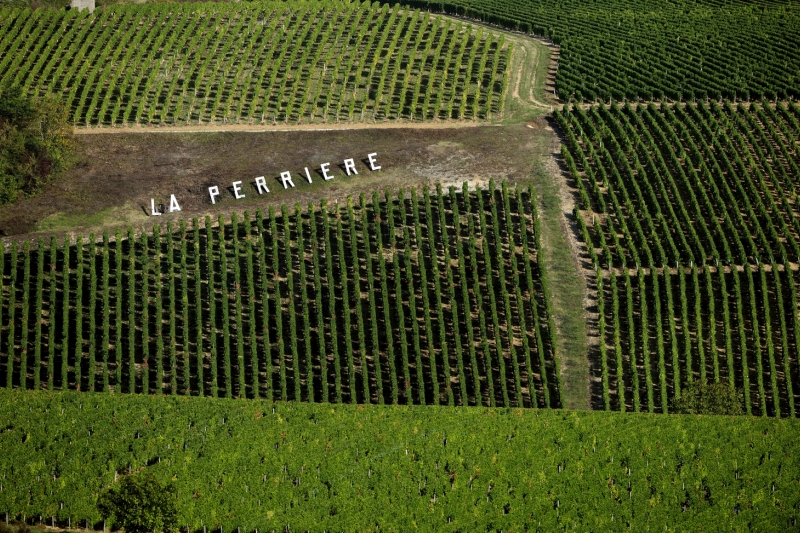
Visit the Sancerre and Upper Loire Wine Region on a Luxury Barge Cruise
Our cruises aboard hotel barges Renaissance takes us through the vineyards of the Sancerre and Upper Loire wine region. For more information on our Burgundy and Loire Valley cruises and the rest of our collection of luxury hotel barge cruises, why not order a free copy of our brochure today or speak to a member of our team directly using our handy Contact Form
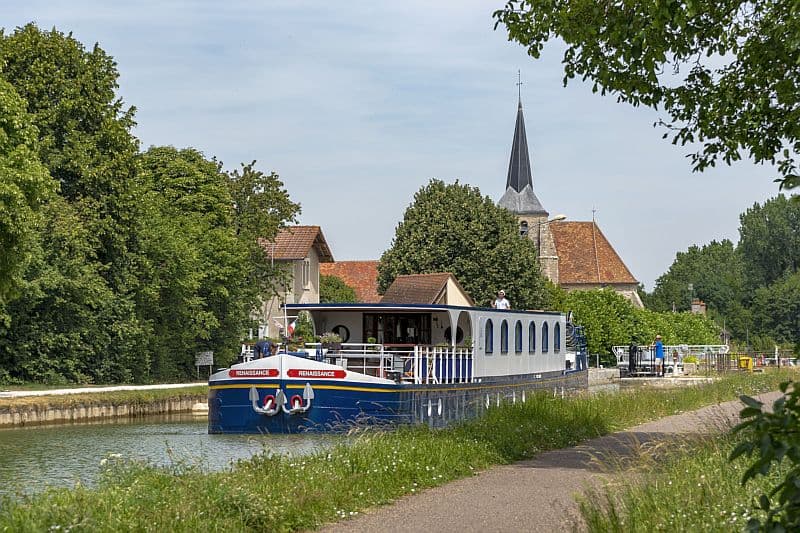
 English
English
 Spanish
Spanish French
French German
German Norwegian
Norwegian Portuguese
Portuguese Swedish
Swedish Italian
Italian Russian
Russian Simplified Chinese
Simplified Chinese Japanese
Japanese

